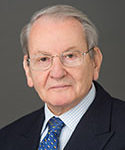By Andrew Sperl and Erica Fruiterman
In Carlitz v. Guse, No. 1370 MDA 2015 (Pa. Super. Apr. 4, 2017) the Superior Court recently issued a 49-page unpublished opinion affirming the lower court’s grant of a new trial. The new trial was originally granted on the basis that the plaintiff was prejudiced by defense counsel’s introduction of a new theory of causation in violation of a pre-trial order precluding that theory.
In deciding the matter, the majority crafted a 49-page opinion, to which the dissenting judge responded with a 12-page dissent, examining whether the new trial was warranted in light of defense counsel’s conduct. The crux of the appeal was whether the “new” theory introduced at trial was within the fair scope of the expert’s first report. These issues – the scope of related theories of causation, the proper remedy when a trial court fails to explicitly rule on whether an initial theory of causation encompasses a later related theory, and when attorney conduct constitutes prejudicial error warranting a new trial – are all factual issues that required extensive analysis by the court.
Given the infrequency with which cases go to trial and the even fewer number of those cases that are challenged on an abuse of discretion basis, relatively few cases like this receive appellate review. However, the Superior Court’s Internal Operating Procedures prohibit citation to unpublished decisions like Carlitz, even for persuasive value. A proposed amendment to the Rules of Appellate Procedure may change that.
On January 7th of this year, the Appellate Court Procedure Rules Committee sought comments on its proposal to amend Rule of Appellate Procedure 126. This amendment would create a uniform rule permitting citation to unpublished memorandum decisions of Pennsylvania’s appellate courts for their persuasive value. Currently, the Superior Court’s Internal Operating Procedures prohibit citation to that court’s unpublished opinions except in limited circumstances. 210 Pa. Code § 65.37. The Commonwealth Court permits citation to its unpublished opinions issued after January 15, 2008 “for [their] persuasive value, but not as binding precedent.” 210 Pa. Code § 69.414. The comments to the draft rule explain that only non-precedential decisions from the date the rule is adopted would be available for citation. The public comment window closed on February 9, 2017, and submission of the proposed amendment to the Supreme Court should soon follow.
In our common law system, judicial opinions are not just a byproduct of deciding an individual case. They also provide guidance to courts and litigants. In fact, it has even been argued that the Superior Court’s policy against allowing citation violates Article V, Section I of the Pennsylvania Constitution, which vests the Commonwealth’s judicial power in the courts (an argument the court rejected). See Schaaf v. Kaufman, 850 A.2d 655 (Pa. Super. 2004).
On the other hand, the Superior Court is one of the busiest in the nation, and its bar against citing unpublished opinions is motivated by, among other things, a concern that “[a]lthough the court give[s] every case the attention necessary to render a decision, [it] cannot draft each decision with as great of care. . . . [M]emorandum decisions are a useful, although admittedly not ideal, tool for deciding cases while maintaining control of our time and the development of the law.” Id. at 661.
The proposed rule change takes a reasonable approach by maintaining unpublished opinions as tools for the court to dispose of cases without precedential effect, while still allowing those decisions to be cited for their persuasive value. Allowing citation to unpublished opinions particularly makes sense where there is no restriction on litigants’ ability to cite other types of non-binding precedent (such as trial court cases from other jurisdictions), and where the court’s unpublished opinions are widely available online.



